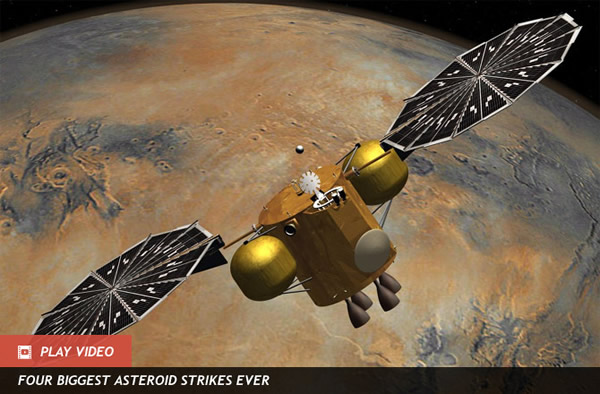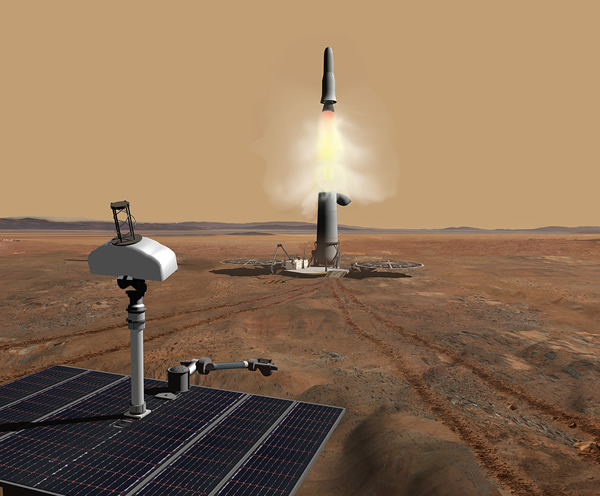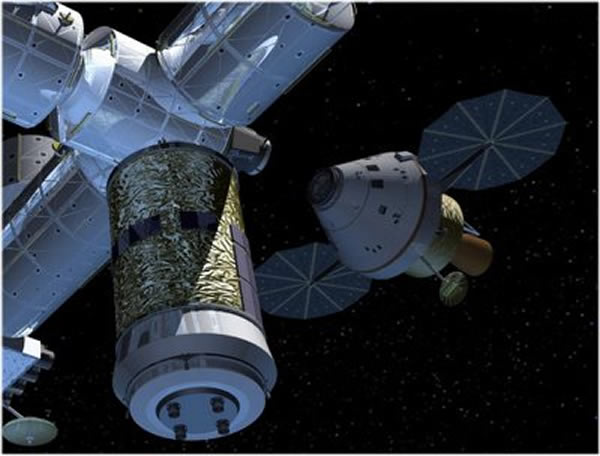Asteroid Initiative Could Lead to Mars Sample Return
Asteroid Initiative Could Lead to Mars Sample Return
NASA’s new asteroid capture mission, officially know as the Asteroid Initiative (AI), has gotten the cold shoulder from some scientists in the planetary community. However, if your research centers on the solar system’s minor bodies, towing an asteroid into the Earth-moon system could be a bonanza. You get to meet an asteroid up close and personal. But, if you’d rather find life on Mars, there doesn’t seem to be any obvious connection with the AI.
The technology that will be developed for pulling off the asteroid hijacking will no doubt have spinoffs. NASA will need advances in computer directed autonomous rendezvous, docking, and long-term electric propulsion capability.
A win-win for the planetary community would happen if the technology developed for the AI could be used for retuning rock and soil samples from Mars that might contain direct evidence for extraterrestrial life.
A solar-electric powered clone of the asteroid retrieval vehicle could be dispatched to Mars to pick up and return rock samples to Earth. NASA’s manned Orion vehicle would play a role in retrieving the samples from a lunar parking orbit and bringing them down to Earth. This would eliminate the payload penalty of launching and entire return canister to Mars with the ability of reentering Earth’s atmosphere.
I think it might also mollify doomsayers who will inevitable get nervous about an automated probe returning a potential alien bug to Earth’s surface. They would cite the crash-landing of NASA’s Genesis sample-return capsule in 2004 as a precedent for the best plans going awry.
Mars rock samples in the hands of Orion astronauts could first be transported to a lab facility onboard the International Space Station for an initial assessment of the biohazard potential. If a Martian bug gets loose, at least it won’t be on Earth’s surface.
One scenario is that another Curiosity-type rover could be sent to Mars and collect interesting looking samples by 2020. A second rover with an ascent vehicle later lands and meets its silicon-brained cousin to collect the rock and load them onboard a “space express” liftoff vehicle.
Rather than carting along return-to-Earth propellant, the launched would only need to reach Mars orbit. The butterfly-wing ion propelled transfer vehicle would rendezvous with the payload high above Mars and carry it back to Earth. This interplanetary shuttle could have elaborate sterilization procedures onboard should the Mars rock/soil sample canister be inadvertently breached.
Following a trajectory similar to that of the AI mission, the interplanetary shuttle enters lunar orbit. An Orion capsule and crew are dispatched on a week-long round trip to retrieve the canister for return to Earth. While docked to the solar-electric shuttle the ship’s xenon fuel might be replenished for a future interplanetary sortie.
A Mars sample return is a top-priority mission as identified by the U.S. National Research Council. Despite the rush to get to Mars as promoted by some space advocates, the harsh reality is that a lot more must be known how deadly the planet might be (a silly sci-fi melodrama about this can be seen in the 1959 B-grade film, The Angry Red Planet). It’s not impossible that a breach of quarantine could infect and wipe out the first astronaut crew on Mars, as dramatized in the 2011 film, Apollo 18.
Scientists might eventually learn that there are certain astrobiological niches on the surface that would be a “do not enter” zone for human explorers.
So, despite its drawbacks, the AI mission promises to build a framework for our next phase of reconnoitering the solar system — beginning with asteroids and potentially continuing onto Mars.(Jun 5, 2013 01:51 PM ET // by Ray Villard)














